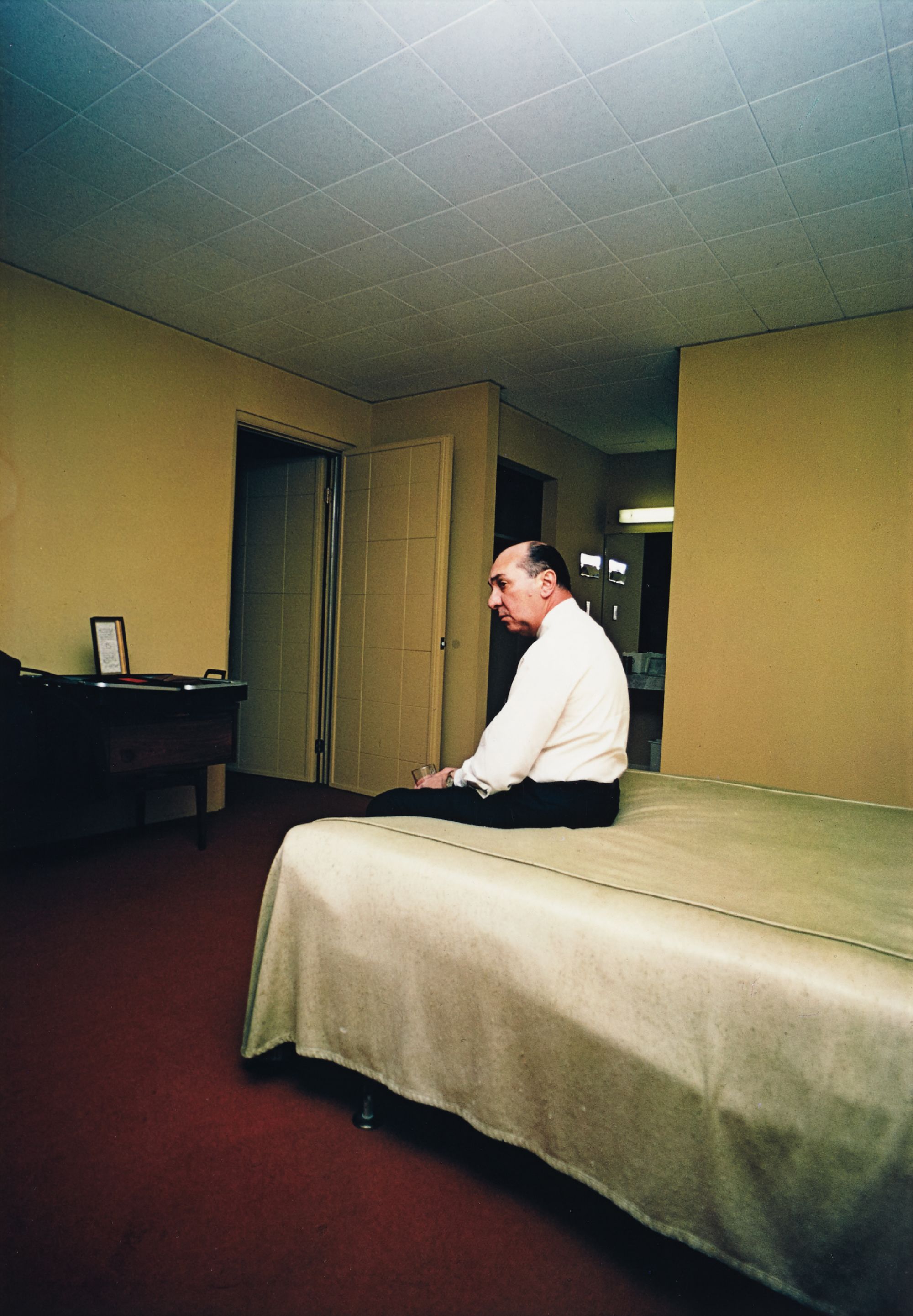

19
William Eggleston
Huntsville, Alabama
Full-Cataloguing
-John Szarkowski in his introduction to “William Eggleston’s Guide”
In the late 1960s and early 1970s, Memphis native William Eggleston photographed in and around the towns he knew, capturing scenes that today form a visual document of the American south. What distinguished him from others who had a similar pursuit (Robert Frank with The Americans being a noted example) is that Eggleston captured what he saw in vibrant color, breaking out of the traditional black and white mold. These pictures, further distinguished by their contrast of warm and cool, middle horizon line, and at times low vantage point, simultaneously elevated the commonplace and brought color photography into the context of fine art photography.
The photographs received early recognition by John Szarkowski who, in 1976, granted William Eggleston a major one-man show of color photographs at The Museum of Modern Art in New York. The exhibition featured 75 prints, a collaborative edit between Szarkowski and Eggleston that focused on pictures from the Mississippi Delta, Tennessee, and New Orleans. The accompanying monograph, William Eggleston’s Guide was MoMA’s first publication of color photography and had a tighter edit of 48 images, which included lot 21 Memphis (what is considered the seminal image of this body of work, featured on the cover), lot 22 Sumner, Mississippi, lot 23, Jackson, Mississippi, and the present lot.
Once commenting on the photograph, Eggleston stated, “It was not so interesting to stand at normal standing-height and look down at this thing, so I got down low with it.” From this almost child-like point of view, the tricycle dominates the picture, with the complimentary colors of the blue-green frame, and bright cherry red handlebar, pushing the suburban Memphis setting to the background, leaving the viewer to contemplate the balance of color and form, and the transformation of the mundane into the monumental.
While today these images are familiar, at the time, they were shocking to critics and audience alike, as expectations of photography within the museum context remained confined to a traditional black and white image. Having broken that barrier, Eggleston’s deceivingly casual images harbingered the use of color as a vital component of the photographic composition.
Like the prints exhibited in the 1976 MoMA exhibition, the prints being offered as lots 21, 22, 23, and the present lot, are all in the dye transfer process. Known for its intense saturation of color and being the only printing process that allowed for individual color adjustments, it was expensive and rarely used for fine art printing when Eggleston starting using the method, likely 1974. Today it is ever more costly and rare as Kodak stopped manufacturing the chemicals to make dye transfer prints in the mid-1990s, and few supplies remain. Further enhancing the rarity of this specific print, it was printed prior to the edition of 20 from 1980, and was created from the original Kodachrome transparency, which was lost sometime after that edition was produced.
Other prints of this image are in the collections of the Museum of Modern Art, New York, the Whitney Museum, New York, and the Milwaukee Art Museum.
William Eggleston
American | 1939William Eggleston's highly saturated, vivid images, predominantly capturing the American South, highlight the beauty and lush diversity in the unassuming everyday. Although influenced by legends of street photography Robert Frank and Henri Cartier-Bresson, Eggleston broke away from traditional black and white photography and started experimenting with color in the late 1960s.
At the time, color photography was widely associated with the commercial rather than fine art — something that Eggleston sought to change. His 1976 exhibition at the Museum of Modern Art, Color Photographs, fundamentally shifted how color photography was viewed within an art context, ushering in institutional acceptance and helping to ensure Eggleston's significant legacy in the history of photography.